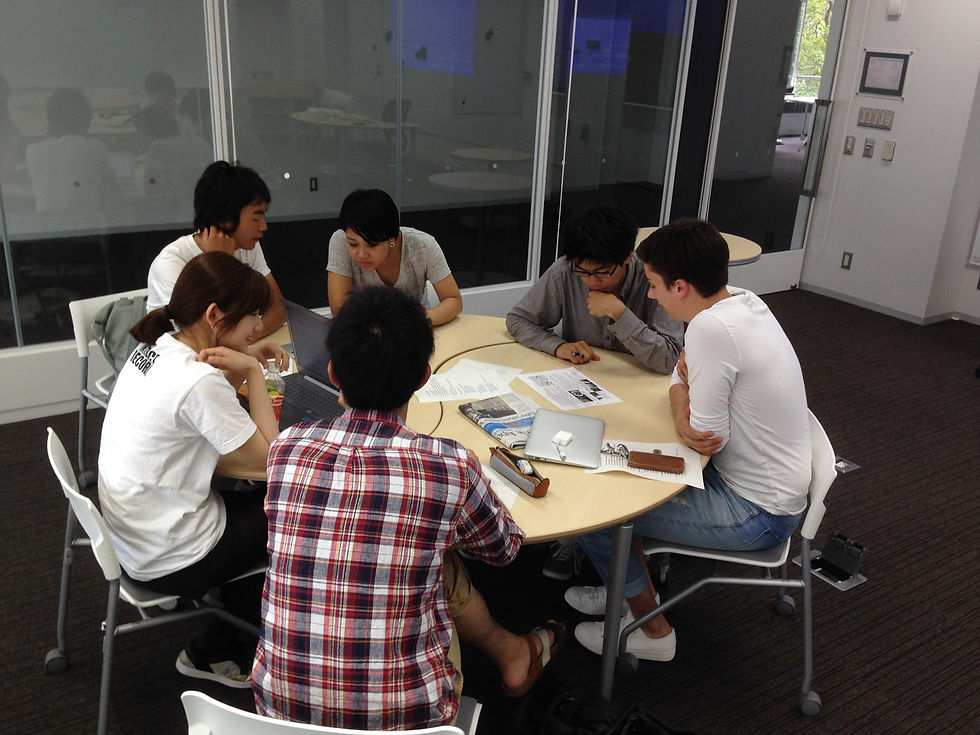Taking a PEAK Course: Through the Eyes of an April-Entry Student
- Komaba Times
- Jan 18, 2017
- 3 min read
Updated: Oct 10, 2019
By KAI OHATA
Some domestic students (April-entry students) have found it beneficial and interesting to take PEAK courses, although it is not always easy for them to know beforehand what PEAK courses or the students that take them are like. I entered a classroom of a PEAK course, named Komaba Times, for the first time in April 2015 without any prediction about what the future would hold. This took some courage, but it has given me a lot of opportunities to write in English.
Komaba Times features journalistic writing, and in class we discuss journalistic matters in a small group, write articles like this one you are reading at the moment, give feedback on classmates’ articles. I am sure we can learn a lot from trying to write in a totally different way from the one we do in ALESA/ALESS, our academic writing class.
This is just one example of a variety of PEAK courses on offer. Yoko Iwase, an April-entry 2nd year student, is taking another one, Philosophy East and West, in which she learns metaphysics, epistemology, and ethics. She likes the course and found that she loves expressing her opinions in English and loves that the professor is very enthusiastic; enough to make the whole class involved in the discussion. Just these two examples of perspectives on PEAK show the great diversity of PEAK classes and its appeal for some domestic students.
According to the administration office of the university, however, only 34 domestic students took PEAK junior division courses in the winter semester of 2014. This number has fluctuated between 30 and 50 in the last few years. The number is surprisingly small, given that PEAK courses are open to all students of the university, which has about three thousand April-entry students in each year. What is discouraging them from taking PEAK courses?

April-entry students enjoying a discussion with PEAK students. Photo by author.
One of the reasons may lie in their lack of confidence in using English, as Yoko hinted. She pointed out that we need some level of English in order to truly learn an area of study. Lectures delivered in English are definitely something that attracts domestic students who seek a chance to practice their English skills, but, at the same time, it is something that discourages those who are not so confident in their language ability.
When you tell other students who do not participate in PEAK classes that you are taking a PEAK class, their responses will be, ‘you have some courage to do that!’ or ‘it is expected from a highly motivated student like you.’ This may be because it seems unusual or even scary for an April-entry student to take a PEAK course when we can choose courses in Japanese. I have to admit that taking a PEAK course is not a common option for domestic students.
All the same, I believe that PEAK courses are too fruitful of an option for domestic students to miss, even if it is just for the sake of seeing and making friends with students from literally all over the world. That kind of experience has to be of great value for many Todai students who tend to have friends from similar backgrounds to them.
Yoko mentions, when asked if her image of PEAK has changed after actually taking the course, that she was surprised how the PEAK students' backgrounds were so diverse. The exact same thought struck me after taking my first class of Komaba Times. What I have found about PEAK is that the diversity is always here waiting for us and we are welcome to it. Even though such pockets of foreign perspectives may be unique within Todai, if we are curious to know more, and challenge ourselves as domestic students, all we have to do is to have a little courage and jump on in.
Originally posted on June 22, 2015
